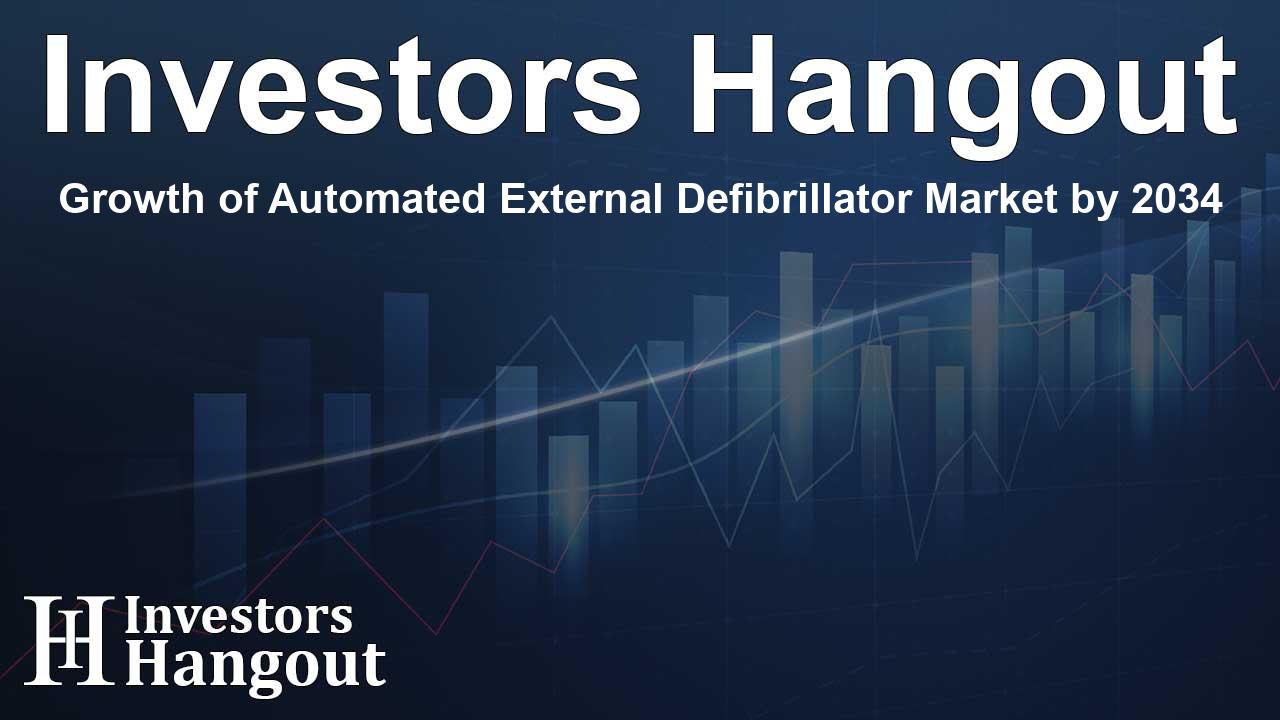Growth of Automated External Defibrillator Market by 2034

Overview of the Automated External Defibrillator Market
The global automated external defibrillator (AED) market is on a promising path, projected to soar to USD 2,097.1 million by 2034 from USD 1,330.3 million in 2024. This transition showcases a notable compound annual growth rate (CAGR) of 4.7% over the forecast period. The rising demand for accessible medical technologies, particularly in response to the increasing instances of sudden cardiac arrest (SCA) globally, is driving this growth.
The Importance of Automated External Defibrillators
AEDs are pivotal in emergency situations, especially for individuals suffering from SCA. SCA is a growing concern linked to various risk factors, notably sedentary lifestyles that contribute to heart conditions. AEDs not only assess cardiac rhythms but also deliver electric shocks as needed to restore a normal heart rhythm. The growing prevalence of healthy lifestyle-related conditions further fuels the demand, prompting healthcare professionals and public institutions alike to equip more venues with these critical devices.
Advancements in AED Technology
Manufacturers are actively innovating to meet the increasing demand for enhanced AED technology. The focus has shifted towards creating user-friendly devices that even untrained individuals can operate confidently during emergencies. This accessibility is crucial in expanding public access to effective emergency care and solidifies the role of AEDs as lifesaving tools.
Market Trends and Growth Factors
With more healthcare organizations, educational institutions, workplaces, and public locations implementing AEDs, the market is poised for significant growth in the years ahead. The integration of these devices into various environments underscores their importance in emergency healthcare technology.
Key Market Drivers
Three prominent factors driving market expansion include: a rise in awareness regarding cardiac health, increased healthcare investments, and supportive governmental initiatives aimed at improving AED accessibility. As public consciousness around cardiac emergencies rises, more entities are championing initiatives for wider AED deployment.
Competitive Landscape of the AED Industry
Leading players like Zoll Medical Corporation, Koninklijke Philips N.V., Stryker, and NIHON KOHDEN CORPORATION are gaining substantial shares in the market, offering extensive product portfolios that leverage advanced technologies. Beyond the market leaders, several organizations are focusing on strategic partnerships to broaden their presence and enhance competitiveness in the industry.
Recent Developments in the Industry
- In late 2024, Avive Solutions Inc. entered into a partnership with ADS, enhancing its capabilities in serving government sectors.
- ZOLL, an Asahi Kasei company, successfully achieved EU Medical Device Regulation approval for its ZOLL AED Plus.
- SCHILLER introduced the FRED easy G2, a novel AED model, marking an exciting addition to the market.
Market Segmentation Insights
The AED market is categorized by:
By Product
Products are classified into semi-automated external defibrillators and fully automated options, catering to varied user capabilities.
By Modality
Market segments include professional-use AEDs and those designed for public access, highlighting the different operational settings of AEDs.
By End User
Categories include healthcare establishments like hospitals and clinics versus accessible public locations including airports and shopping malls, emphasizing the diversity in AED application.
Frequently Asked Questions
What are the primary growth drivers for the AED market?
The primary growth drivers include increasing awareness of cardiac health, healthcare investments, and government initiatives to enhance AED accessibility.
How significant is the role of AEDs in emergencies?
AEDs play a crucial role in saving lives during cardiac emergencies by analyzing heart rhythms and delivering shocks if necessary.
Who are the key players in the AED market?
Key players include Zoll Medical Corporation, Koninklijke Philips N.V., Stryker, and NIHON KOHDEN CORPORATION, among others.
What recent changes are notable in the AED industry?
Recent developments include partnerships among manufacturers and significant regulatory approvals, such as ZOLL's recent EU device regulation approval.
What are the categories in which AEDs are segmented?
The AED market is segmented by product type, modality, and end user, allowing for tailored strategies in addressing market needs.
About The Author
Contact Lucas Young privately here. Or send an email with ATTN: Lucas Young as the subject to contact@investorshangout.com.
About Investors Hangout
Investors Hangout is a leading online stock forum for financial discussion and learning, offering a wide range of free tools and resources. It draws in traders of all levels, who exchange market knowledge, investigate trading tactics, and keep an eye on industry developments in real time. Featuring financial articles, stock message boards, quotes, charts, company profiles, and live news updates. Through cooperative learning and a wealth of informational resources, it helps users from novices creating their first portfolios to experts honing their techniques. Join Investors Hangout today: https://investorshangout.com/
The content of this article is based on factual, publicly available information and does not represent legal, financial, or investment advice. Investors Hangout does not offer financial advice, and the author is not a licensed financial advisor. Consult a qualified advisor before making any financial or investment decisions based on this article. This article should not be considered advice to purchase, sell, or hold any securities or other investments. If any of the material provided here is inaccurate, please contact us for corrections.
